Recent Posts
Safely Enjoying Fall Bonfires and Grilling | SERVPRO of Downtown Las Vegas
10/15/2024 (Permalink)
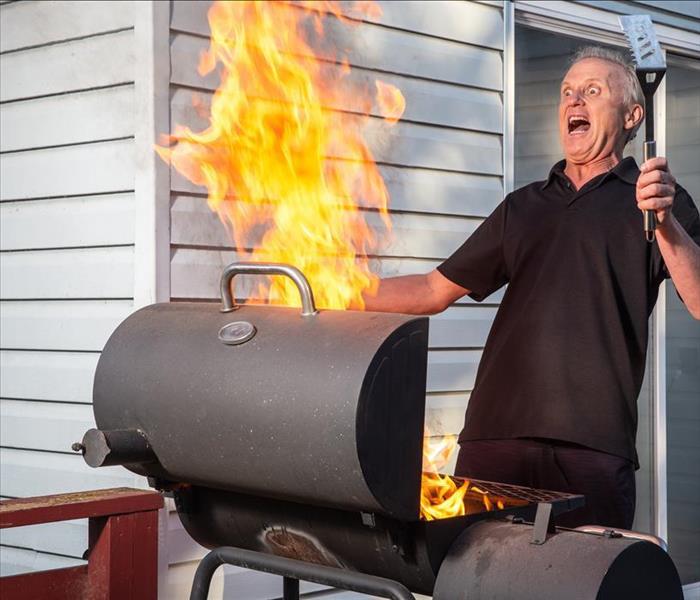 Don't let fire damage ruin your outdoor fun this fall! Call SERVPRO of Downtown Las Vegas for a faster response!
Don't let fire damage ruin your outdoor fun this fall! Call SERVPRO of Downtown Las Vegas for a faster response!
Fall is the perfect season for gathering around a cozy bonfire or firing up the grill for a barbecue with friends and family. However, it's essential to prioritize fire safety to prevent accidents and injuries.
As experts in fire damage restoration, SERVPRO of Downtown Las Vegas is here to offer valuable tips for safely enjoying bonfires and grilling this fall.
Choosing the Right Location for Bonfires
When planning a bonfire, selecting the right location is crucial for safety. Follow these guidelines to minimize the risk of fire hazards:
- Check local regulations: Before lighting a bonfire, familiarize yourself with local ordinances and regulations regarding outdoor fires. Some areas may have restrictions or require permits for open flames.
- Clear the area: Ensure the area around the bonfire pit is clear of any flammable materials, such as dry leaves, brush, or overhanging branches. Maintain a safe distance from buildings, trees, and other structures.
- Use a designated fire pit: If possible, use a designated fire pit or ring for your bonfire. These structures help contain the flames and reduce the risk of spreading.
- Keep a fire extinguisher nearby: Have a fire extinguisher or a bucket of water nearby in case of emergencies. It's essential to be prepared to extinguish the fire quickly if necessary.
Grilling Safety Tips
Grilling is a popular activity during the fall season, but it's essential to practice safe grilling habits to prevent fires and injuries. Follow these tips for a safe grilling experience:
- Keep the grill outdoors: Always use the grill outdoors in a well-ventilated area. Never grill indoors or in enclosed spaces, as this can lead to carbon monoxide poisoning and fire hazards.
- Keep the grill clean: Regularly clean your grill to remove grease buildup, which can increase the risk of flare-ups and fires. Clean the grill grates, drip pans, and grease traps after each use.
- Check for gas leaks: If you're using a gas grill, check the gas connections and hoses for leaks before lighting the grill. Apply a soapy water solution to the connections and hoses and look for bubbles, which indicate a leak.
- Stay vigilant: Never leave the grill unattended while it's in use. Keep a close eye on the grill and avoid distractions to prevent accidents and flare-ups.
Extinguishing the Flames Safely
After enjoying your bonfire or grilling session, it's essential to extinguish the flames safely to prevent runaway fires:
- Allow the fire to burn down: Let the bonfire burn down to embers before extinguishing it completely. Use a shovel to spread out the embers and promote faster cooling.
- Use water to extinguish the flames: Pour water over the fire pit or grill to extinguish any remaining flames and embers. Continue adding water until the fire is completely out and the coals are cool to the touch.
- Dispose of ashes properly: Once the fire is extinguished, allow the ashes to cool completely before disposing of them in a metal container. Never dispose of hot ashes in plastic bags or dumpsters, as this can pose a fire hazard.
By following these fire safety tips, you can enjoy fall bonfires and grilling activities safely and responsibly. However, if you do experience a fire-related emergency, SERVPRO of Downtown Las Vegas is Here to Help®. Our team specializes in fire damage restoration and can assist you with cleanup and restoration efforts to get your property back to normal quickly and efficiently.
Stay safe this fall! Contact SERVPRO of Downtown Las Vegas for expert fire damage restoration services and peace of mind.
Preventing Water Damage from Appliances | SERVPRO of Downtown Las Vegas
8/12/2024 (Permalink)
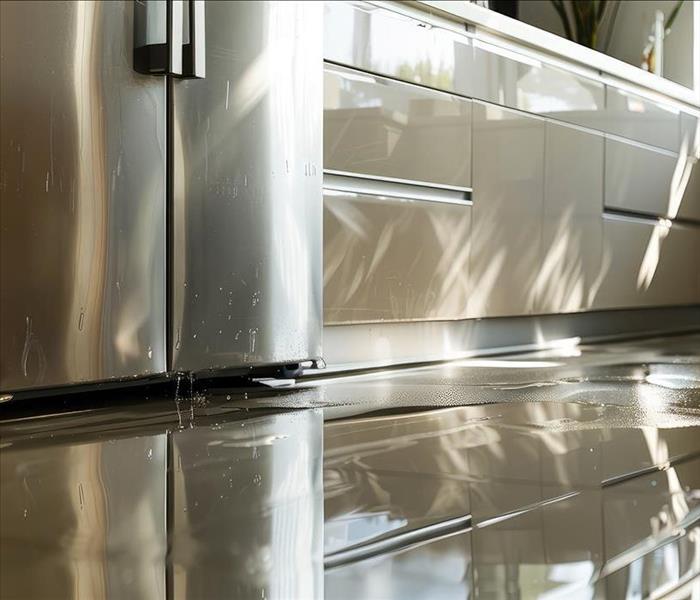 When appliances leak in your Las Vegas home, call SERVPRO of Downtown Las Vegas to fix it fast!
When appliances leak in your Las Vegas home, call SERVPRO of Downtown Las Vegas to fix it fast!
Water damage from household appliances like dishwashers and washing machines can lead to costly repairs and extensive cleanup efforts. Fortunately, with proper maintenance and preventive measures, you can reduce the risk of appliance-related water damage in your home.
SERVPRO of Downtown Las Vegas offers valuable tips below to help you safeguard your property from these common sources of water damage.
Regular Maintenance for Dishwashers
Dishwashers are a convenient appliance that many homeowners rely on daily. However, without proper maintenance, they can become a source of water damage. To prevent leaks and other issues, follow these maintenance tips:
- Inspect the seals and gaskets: Over time, the seals and gaskets around the dishwasher door can wear out or become damaged, leading to leaks. Regularly inspect these components for signs of wear and tear, and replace them as needed to maintain a watertight seal.
- Clean the dishwasher filter: Most dishwashers are equipped with a filter that traps food particles and debris. A clogged or dirty filter can impede drainage and cause water to overflow. Clean the filter regularly to ensure proper drainage and prevent water damage.
- Check for loose connections: Periodically inspect the water supply line and connections behind the dishwasher for any signs of leaks or loose fittings. Tighten connections if necessary to prevent leaks.
- Run maintenance cycles: Some dishwashers offer maintenance cycles that help clean and maintain internal components. Run these cycles periodically to prevent buildup of soap scum, debris, and mineral deposits that can affect the dishwasher's performance.
Preventing Washing Machine Mishaps
Washing machines are another common culprit of water damage in homes. To avoid potential flooding and water damage from your washing machine, consider the following preventative measures:
- Inspect hoses regularly: Check the hoses connecting your washing machine to the water supply for signs of wear, cracks, or bulges. Replace hoses every five years or sooner if you notice any damage to prevent leaks or bursts.
- Install a leak detection device: Consider installing a leak detection device near your washing machine that can alert you to leaks or excessive moisture. These devices can help you catch leaks early and prevent extensive water damage.
- Use the appropriate amount of detergent: Using too much detergent can create excess suds that may overflow from the washing machine during the cycle. Follow the manufacturer's recommendations for detergent usage to avoid this issue.
- Level the washing machine: Ensure that your washing machine is properly leveled to prevent it from vibrating excessively during the spin cycle. Excessive vibration can damage the machine and cause leaks.
Additional Tips for Water Damage Prevention
In addition to maintaining your appliances, there are several other steps you can take to prevent water damage in your home:
- Monitor your water bill: Keep an eye on your water bill for any sudden increases, as this could indicate a hidden leak.
- Know the location of your main water shut-off valve: In case of a water emergency, it's essential to know how to shut off the main water supply to your home to minimize damage.
- Consider installing a water leak detection system: These systems can alert you to leaks or abnormal water usage patterns, providing early warning of potential water damage.
By following these preventive measures and staying vigilant, you can reduce the risk of water damage from household appliances in your home. However, if you do experience water damage, SERVPRO of Downtown Las Vegas is Here to Help®. Our experienced team specializes in water damage restoration and can assist you with cleanup and restoration efforts to get your home back to its preloss condition quickly and efficiently.
Don't wait until it's too late. Contact SERVPRO of Downtown Las Vegas today for expert water damage restoration services and peace of mind.
Comprehensive Commercial Services | SERVPRO of Downtown Las Vegas
8/12/2024 (Permalink)
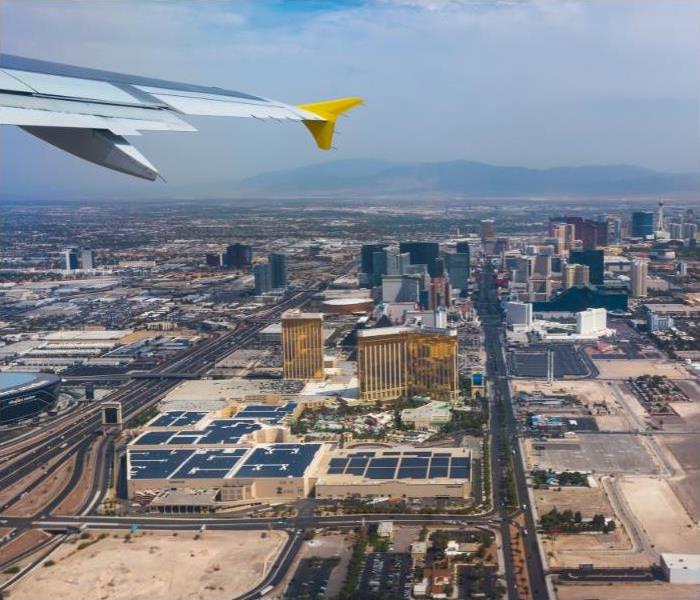 No matter what your business does here, SERVPRO of Downtown Las Vegas is here for all your commercial service needs.
No matter what your business does here, SERVPRO of Downtown Las Vegas is here for all your commercial service needs.
When disaster strikes a commercial property, whether it's due to water damage, fire damage, or a mold infestation, the repercussions can be devastating. That's where SERVPRO of Downtown Las Vegas comes in.
With our comprehensive commercial services, we help businesses in the Downtown Las Vegas area recover from disasters and get back to business as usual. Here's how we can assist you:
Water Damage Restoration
Water damage can wreak havoc on commercial properties, causing structural damage, compromising inventory, and disrupting business operations. At SERVPRO of Downtown Las Vegas, we understand the urgency of water damage restoration for businesses.
Our team is equipped with advanced equipment and specialized training to handle water extraction, drying, and dehumidification efficiently and effectively. We work quickly to minimize downtime and prevent further damage, allowing you to resume normal operations as soon as possible.
Fire Damage Restoration
A fire in a commercial property can be catastrophic, resulting in significant damage to the structure, contents, and business assets. SERVPRO of Downtown Las Vegas offers comprehensive fire damage restoration services to help businesses recover from fires.
From soot and smoke cleanup to odor removal and structural repairs, our team is trained and certified to handle every aspect of fire damage restoration. We work diligently to restore your property to its pre-fire condition and get your business back up and running quickly.
Commercial Cleaning Services
Maintaining a clean and healthy environment is essential for businesses, especially those in industries such as hospitality, healthcare, and retail. SERVPRO of Downtown Las Vegas offers a range of commercial cleaning services to help businesses maintain a clean and safe environment for employees, customers, and visitors.
Whether you need routine janitorial services, deep cleaning, or specialty cleaning for specific areas or surfaces, our team has the expertise and resources to meet your needs.
From water damage restoration and fire damage restoration to commercial cleaning services, SERVPRO of Downtown Las Vegas is your trusted partner for comprehensive commercial services.
When disaster strikes, you can count on us to respond quickly and efficiently, minimizing downtime and helping you get back to business as usual.
Don't let disaster disrupt your business. Contact SERVPRO of Downtown Las Vegas for expert commercial services and peace of mind.
Responding to a Flood at Your Business | SERVPRO of Downtown Las Vegas
5/21/2024 (Permalink)
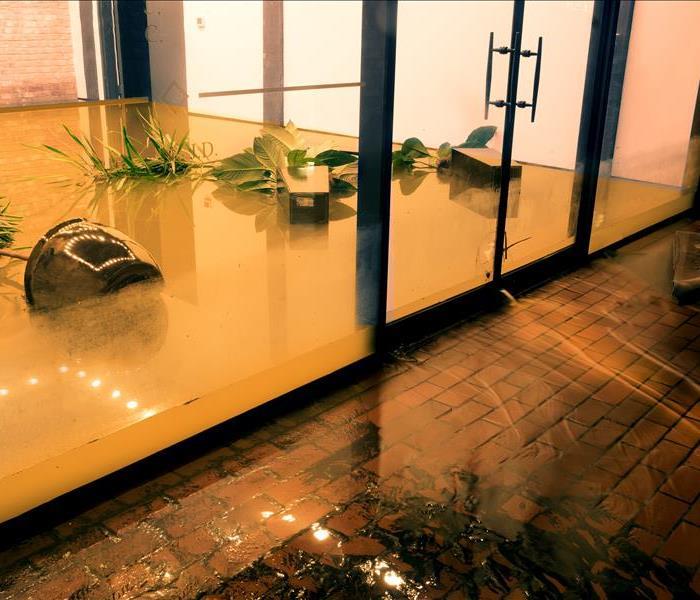 Has a flash flood invaded your business? SERVPRO of Downtown Las Vegas is here for the rescue. Call us today!
Has a flash flood invaded your business? SERVPRO of Downtown Las Vegas is here for the rescue. Call us today!
Flood situations can occur due to natural disasters or from an accident that happens at your property. Either way, they can cause significant damage in a short amount of time, leaving you with a watery mess and a lot of questions about next steps.
No matter how the water got into your business, knowing what to do before, during and after a flood can help you recover faster and stay in control of your entire situation.
Responding to a Flash Flood
If the forecast is calling for heavy rain, start getting your space ready by checking your gutter system and by pulling any patio furniture, signs or other outdoor equipment into your back room.
Consider temporarily closing up shop while the rain falls, as flooding situations can easily become dangerous for patrons that are out and about or walking around downtown. Stay away from doors and windows, and remain calm if water does start flowing into your business. It will eventually stop when the storm passes on.
Responding to a Manmade Disaster
If the situation appears to be an accident like a burst pipe or broken water line, a quick reaction is crucial for everyone’s safety. Locate the main water valve that is controlling the flood of water and shut it off.
Stopping the flow can help stop the situation from getting worse. Depending on where the flood occurred in your building, you may need to work on evacuating anyone in the general vicinity.
Flood water should always be treated with respect and you should keep your distance. Different pipes are in charge of different types of water, and it can be hard to tell what type of water is now flowing onto your floor. Clean water, gray water and even black water could be pouring out, and so exercising caution and avoiding walking through it is always a good idea.
What to Do Afterward
Move carefully around your business once the water stops flowing in. Hidden damage like loose nails, soggy walls and debris lurking under the water can quickly become dangerous situations if you aren’t careful.
You should also try to take as many photos as possible. Getting fresh images of the damage can help make the claims process much easier for your insurance company, and they give us a good indication of where to start when coming up with your restoration plan.
Then it’s time to call us! Our team will focus on getting your property back to normal as fast as we can. We will remove excess water, address repairs and tend to any cleaning needs that you may have.
Our goal is to help you overcome flood damage, but also to help you avoid long-term structural issues and mold growth. We will get you back open for business in no time at all!
Flooding situations can be overwhelming for any business owner. Call SERVPRO of Downtown Las Vegas today
Safeguarding Your Business With Our Help | SERVPRO of Downtown Las Vegas
2/21/2024 (Permalink)
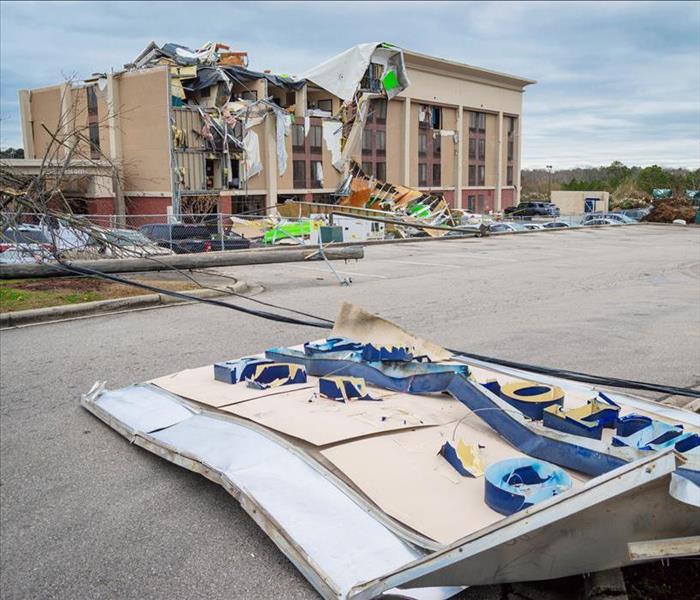 When disaster strikes your building it can feel extremely overwhelming. That's why SERVPRO of Downtown Las Vegas is here for the rescue. Call us now!
When disaster strikes your building it can feel extremely overwhelming. That's why SERVPRO of Downtown Las Vegas is here for the rescue. Call us now!
Our downtown area is world-renowned for all of the arts, entertainment, fun and delicious food, and we have our wonderful businesses to thank for that.
Every business from the very end of the Strip to Fremont Street offers an important service and is a vital part of our community. That’s why we want to return the favor and help ensure your business is as successful as possible.
We proudly offer our restoration and cleaning services to all of the businesses in the downtown area. We explain more about each of our services below, so check it out to learn more about how we can help you.
Large Restoration Projects
Disaster can strike your business at any time and can have a huge impact on a large number of people. A fire on one level of your hotel could displace thousands of people, a kitchen fire at the back of your restaurant could turn dozens of hungry people out on the street or even a simple busted water line could impact your ability to serve people in a timely manner.
In any case, a fast recovery and restoration is crucial to ensure the safety and comfort of your guests. Our large-loss recovery team is up to the task!
We understand the time-sensitive nature of these situations, and we will get right to work cleaning, restoring and sanitizing your space. We have helped hotels, restaurants, casinos, local gift shops and entertainment venues, so we are well-versed in all of the different businesses in our community.
Keeping It Clean
When you are in the public service industry, you know that presentation matters. The public is constantly flowing in and out of your building and sometimes you only get one shot at a good first impression. This is why having a clean space is crucial! You don’t want your patrons to be focused on your dirty carpets or dusty vents because that takes away from the experience.
Let us handle these cleaning duties for you so you can focus on other aspects of your business. We are trained to handle everything from deep carpet cleanings to odor removal and everything in between.
Our goal is to help keep your business clean and sparkling so your guests will want to come back to your place time and time again.
Our team is always here for you no matter what kind of restoration and cleaning assistance you may need. Give us a call today
Tips for Staying Dry When It Rains | SERVPRO of Downtown Las Vegas
11/21/2023 (Permalink)
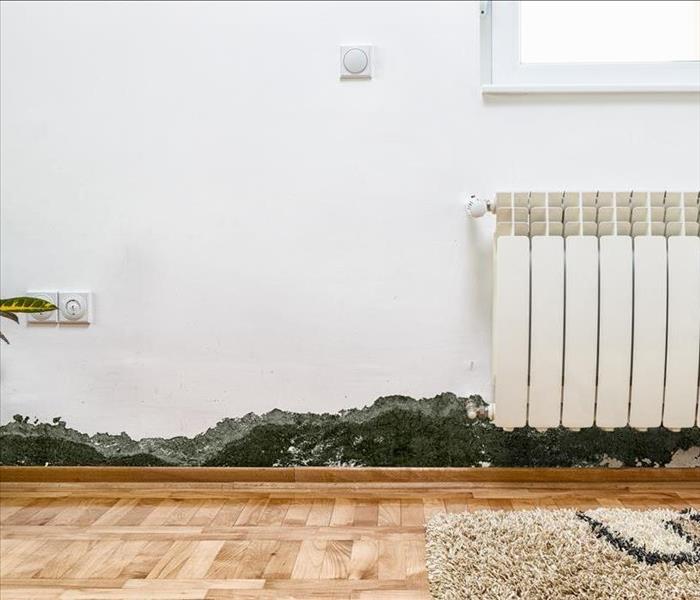 Are you left dealing with the aftermath of water damage to your business? SERVPRO of Downtown Las Vegas is here to help. Call us today!
Are you left dealing with the aftermath of water damage to your business? SERVPRO of Downtown Las Vegas is here to help. Call us today!
The rain can fall fast and furious around here when it does come down. While we may not see the number of rainy days that the rest of the country does, each rainstorm we get can cause significant issues for our community.
In addition to flash floods and slick roads, water damage is a common occurrence because many of us aren’t prepared for the incoming weather!
Knowing what to do to get your home or business ready as soon as a storm is in the forecast can help you avoid serious water damage issues.
Preparing Your Space
If you have a large outdoor area on your property or you own a business that has a large outdoor seating and entertainment area, consider shutting it down early and getting it ready for the elements. Pull cushions inside, tie down tables and chairs and get anything inside that is fragile and could be damaged by the rain.
You should also make sure that your gutter system, downspouts and rain chains are set up and ready to go. If the rain does start falling faster than you anticipated, you need to be able to rely on your gutter system to carry the water down and away from your property in an efficient manner.
Any clogs or blockages can lead to water pouring over the side of your building that will settle down into your foundation, and perhaps, your basement.
Securing Your Property
If you have the time to check your roof for structural issues, grab a ladder and do some investigating. Oftentimes water damage occurs solely because there was some sort of unaddressed home damage that was already there. Look for broken shingles or any obvious gaps or cracks that could let rain inside.
If you are a business owner, consider adjusting any of your plans if you have any activities or events happening in the lower levels or basement of your building. You should also consider rebooking any guests who have rooms on the lowest level to higher ones just to be on the safe side. Flooded basements and rain leaking down the wall is not a good look for anyone, even if it is not your fault.
Where We Come In
Rain has a mind of its own and can cause widespread water damage immediately. If you discover significant water damage in your home or business after the storm passes, give us a call right away. We are trained to dry out your home quickly and address repairs just as fast.
We know that the longer standing water sits on your property, long-term structural issues and mold infestations become more likely. Our restoration team will be able to handle every aspect of your recovery from the initial water extraction to the final drywall and carpet repairs. We will have your space back to normal in no time at all.
Water damage should always be cleaned up quickly. Contact SERVPRO of Downtown Las Vegas for immediate assistance
Preventing a Fire at Your Business | SERVPRO of Downtown Downtown Las Vegas
6/22/2023 (Permalink)
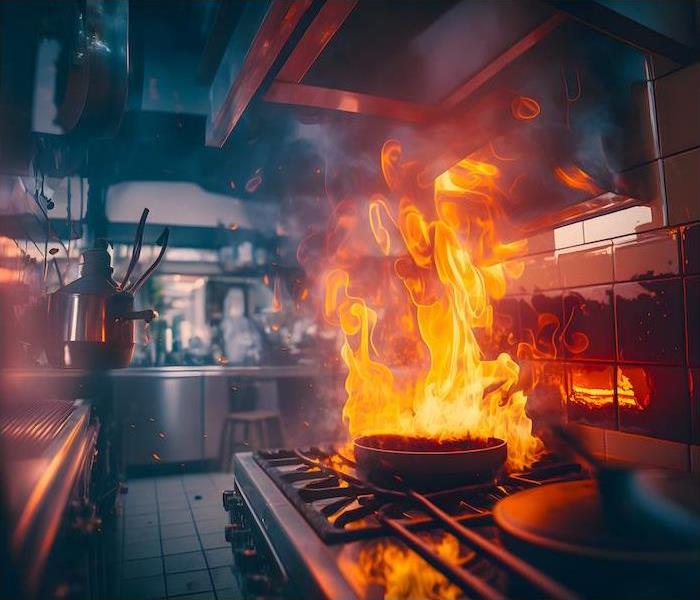 Has your home or business been affected by a fire? Call SERVPRO of Downtown Las Vegas to restore your space.
Has your home or business been affected by a fire? Call SERVPRO of Downtown Las Vegas to restore your space.
Life can get pretty busy as a business owner in Downtown Las Vegas! Since it seems like the city never sleeps, it can be easy to get caught up in the tasks and jobs you need to do to keep your restaurant or establishment running without taking extra precautions to prevent disaster.
However, all it takes is one simple accident to lead to a serious situation. Fires are a common threat to business owners, and they can cause significant damage in a short amount of time. By taking these daily precautions, you can reduce your risk and stay open for business.
Keep It Clean
We are sure that you have a proper opening and closing cleaning checklist that your staff follow, but be sure they are wiping down your equipment thoroughly after each day. Grease can quickly build up on the edges of fryers, cooktops and hoods, leading to a serious situation. In addition, you should have your hoods and ducts cleaned professionally to ensure that any buildup is removed and your exhaust can exit in a safe manner.
You should also be smart about the positioning of your cooking equipment! Try to keep your fryers at least a foot away from any flame–producing equipment, as a single spark could ignite the hot oil and start a massive fire. Every commercial kitchen needs to have a fire extinguisher, so ensure your staff knows where it is and how to use it.
Plan to React
While you can do your best to prevent a fire from occurring, it might not always be possible. In these cases, you need to have a backup plan in place that will quickly snuff out any flames. A working sprinkler system can snuff out a fire in seconds and can easily be installed throughout your place of business.
There are also fire-suppression systems on the market that are really helpful back in the kitchen where grease and oil are being used often. These systems work similarly to a sprinkler system, but chemicals are sprayed out of them instead of water. These chemicals are designed to stop tricky fires like grease fires from spreading.
What to Do After a Fire
Even if you take all the precautions and set up everything so you can react quickly, fires are naturally unpredictable. As soon as the flames are out, pick up the phone and call SERVPRO® of Downtown Las Vegas! We are trained in large loss recovery and commercial property damage and we can work alongside you to ensure a fast recovery.
We know that every minute you are closed can be detrimental to your business, so we focus our efforts on quick and efficient work. When we are through, you would never know your business suffered such an intense disaster!
Are you dealing with fire damage to your commercial property? SERVPRO of Downtown Las Vegas can help.
How to Safely Enter and Inspect a Building After a Storm
6/21/2023 (Permalink)
After a storm disaster, it is crucial to approach building inspection with utmost caution and prioritize safety. Whether it's a hurricane, tornado, or severe thunderstorm, the aftermath can leave buildings damaged and potentially hazardous. As disaster restoration experts, we understand the importance of a thorough assessment while ensuring the well-being of everyone involved. In this blog, we will provide you with a step-by-step guide on how to safely enter and inspect a building after a storm disaster.
Step 1: Assess the Surroundings
Before entering the building, carefully evaluate the surroundings for any visible hazards. Look for downed power lines, unstable structures, leaning trees, or other objects that could pose a risk. Keep a safe distance from these hazards and report them to the appropriate authorities or utility companies if necessary.
Step 2: Ensure Personal Protective Equipment (PPE)
Wearing appropriate personal protective equipment (PPE) is essential to safeguard yourself during the inspection. Prior to entering the building, ensure you have the following PPE:
- a) Hard hat: Protects your head from falling debris or objects.
- b) Safety goggles: Shield your eyes from dust, debris, and potential chemical exposure.
- c) Gloves: Provide hand protection and enhance grip while handling objects.
- d) Dust mask or respirator: Guard against inhaling harmful particles, mold spores, or other contaminants.
Step 3: Turn Off Utilities
Before entering the building, it is crucial to turn off all utilities, including electricity, gas, and water. Damaged electrical systems or leaking gas pipes can pose significant risks. If you're unsure how to shut off utilities, consult with professionals or contact the respective service providers for guidance.
Step 4: Proceed with Caution
Enter the building cautiously, paying close attention to your surroundings. Watch out for weakened structures, sagging ceilings, or unstable floors. Take each step slowly and carefully, using handrails if available. Avoid damaged areas or rooms with visible signs of structural instability.
Step 5: Assess Structural Damage
Once inside, begin the inspection by assessing the structural damage. Look for cracks in walls, ceilings, or foundations. Pay attention to any noticeable shifts or tilts in the building. If you suspect severe structural damage, it is best to evacuate immediately and seek professional assistance.
Step 6: Check for Water Damage
Water damage is a common consequence of storm disasters. Look for signs of water intrusion, such as stains on walls or ceilings, soggy or warped flooring, or a musty odor indicating mold growth. Waterlogged materials should be addressed promptly to prevent further damage and mold infestation.
Step 7: Document the Damage
Take photographs or videos of the damage to document the conditions for insurance claims and restoration purposes. Capture both wide-angle shots and close-ups to provide a comprehensive record. Make detailed notes about the extent of the damage in each area, including specific areas of concern.
Step 8: Exercise Caution with Hazardous Materials
Be mindful of potentially hazardous materials that might have been displaced or exposed during the storm. These could include asbestos, lead-based paint, or chemicals from household or industrial sources. Avoid direct contact and seek professional assistance if you suspect the presence of hazardous materials.
Step 9: Evaluate Electrical Systems
If the electricity has been turned off, avoid turning it back on until a qualified electrician has inspected and certified the safety of the electrical system. Damaged electrical wiring can cause fires or electrical shocks, posing a serious risk.
Safely entering and inspecting a building after a storm disaster requires careful planning, attention to detail, and prioritizing personal safety. By following this step-by-step guide, you can safely conduct a thorough assessment.
The High Cost of Mold Damage: Understanding the Financial Impact
5/8/2023 (Permalink)
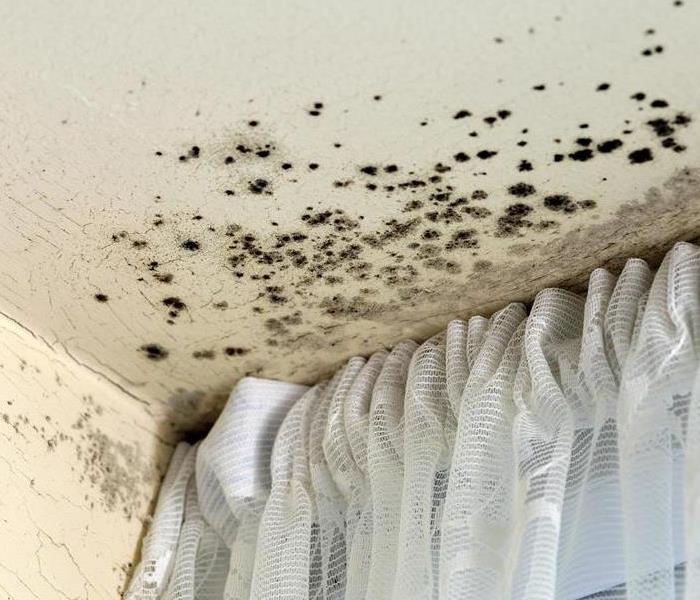 Mold can be expensive, give the professionals a call for your mold remediation.
Mold can be expensive, give the professionals a call for your mold remediation.
Molds are fungi, which are microscopic organisms that live on dead organic matter. They can be found in soil, plants, and even your own home.
Mold is a type of fungus that grows in damp places like bathrooms or basements. It feeds on organic matter such as wood or paper products and can cause allergic reactions in people who are sensitive to it.
The most common types of mold include:
Black mold (also known as Stachybotrys chartarum). This type of mold looks like dark greenish-black fuzz growing on surfaces such as walls or ceilings in your home; it may also appear as black spots on clothes left in damp areas like laundry rooms; if you have this type of mold growing in your house then you should contact an expert right away because it could cause health problems if inhaled over time.
What Causes Mold?
Mold is a type of fungus that grows in damp environments. It can be harmful to people, animals and buildings if it's allowed to grow unchecked. Mold spores are everywhere, but they won't grow unless they have access to moisture, oxygen and food sources like wood or paper.
Mold can grow on almost any surface where there's enough water damage, from the walls in your bathroom to the ceiling in your attic but it thrives most easily when there's been flooding or other major water leaks (like burst pipes).
If you notice mold growing anywhere in your home or office building after a flood has occurred, it's important not only for safety reasons but also because of how much damage it can cause.
Signs of Mold in the Home
Here are the most common signs of mold in the home:
Musty smell. If you notice a musty odor, it could be an indication that you have a moisture problem and are at risk for mold growth.
Discolored walls or ceilings. If your wall paint looks faded or discolored, this may be due to mold growth on the surface of your walls or ceiling boards.
Visible mold growth in places like showers and sinks where water has been sitting for long periods of time (for example, if there's been an overflow).
Financial Impact
Financially, mold can be costly. Hiring a professional in mold remediation can help remediate and ensure your property is safe from mold damage. Mold inspections should also be done regularly by someone who knows what they're looking for a professional inspector will know how much damage has been done and whether or not it needs immediate attention before it gets worse!
If you have mold in your home, it's important to take the right precautions and contact a professional. Mold can be dangerous if not treated properly, so make sure you know how much it will cost to get rid of the problem before proceeding.
5 Essential Steps to Create an Effective Office Fire Escape Plan
4/11/2023 (Permalink)
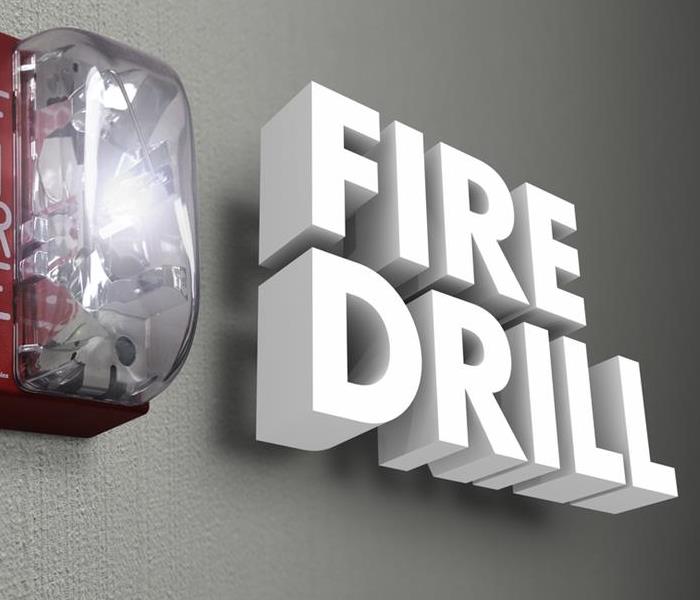 Have an fire escape plan is essential for safety for everyone.
Have an fire escape plan is essential for safety for everyone.
An office fire can be a terrifying and life-threatening experience. That's why it's crucial to have a well-prepared office fire escape plan in place. A fire escape plan outlines the necessary steps to follow in the event of a fire, allowing you and your colleagues to evacuate the building safely and quickly. In this article, we'll guide you through the essential steps to creating an office fire escape plan.
Understand the building's layout
The first step in creating an effective fire escape plan is to understand the building's layout. You should know the location of all the exits, emergency staircases, and fire escapes. Knowing where these exits are located will help you determine the best escape routes during an emergency.
Assign Roles and Responsibilities
Next, you need to assign roles and responsibilities to the members of your team. Decide who will be responsible for calling the fire department, who will assist people with disabilities or mobility issues, who will shut off the electricity or gas, and who will make sure that everyone is accounted for.
Determine Escape Routes
Identify the quickest and safest escape routes from each area of the building. There should be at least two escape routes from each room in case one is blocked. Mark these escape routes clearly and make sure everyone knows where they are.
Communicate the Plan
Once the plan is created, it's essential to communicate it to everyone in the office. Hold a meeting or training session to explain the plan and answer any questions. Post the plan in visible locations throughout the office, such as near exits and in common areas. Regularly remind everyone of the plan and conduct regular fire drills.
Review and Update the Plan
Finally, regularly review and update your fire escape plan. Check if any changes have been made to the building, such as new exits or construction. Make sure that all emergency equipment, such as fire extinguishers and smoke detectors, are in working order. Review the roles and responsibilities of each team member and ensure everyone is familiar with the plan.
In conclusion, creating an office fire escape plan is essential for ensuring the safety of everyone in the building. By understanding the building's layout, assigning roles and responsibilities, determining escape routes, communicating the plan, and regularly reviewing and updating the plan, you can be confident that your team is prepared in case of an emergency. Remember, it's better to be safe than sorry, and creating a fire escape plan is an important step in keeping your team safe.
 Don't let fire damage ruin your outdoor fun this fall! Call SERVPRO of Downtown Las Vegas for a faster response!
Don't let fire damage ruin your outdoor fun this fall! Call SERVPRO of Downtown Las Vegas for a faster response!





 24/7 Emergency Service
24/7 Emergency Service







